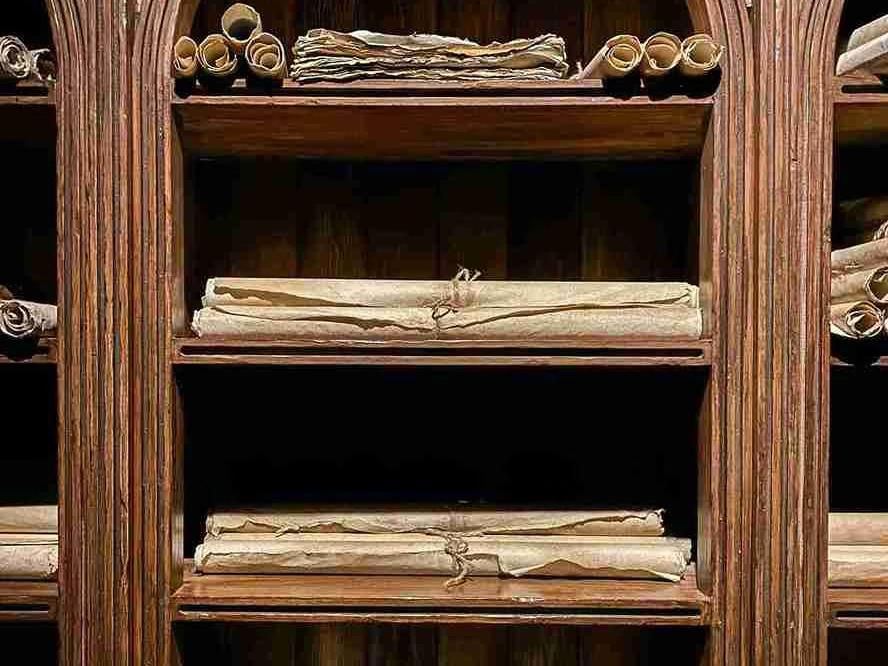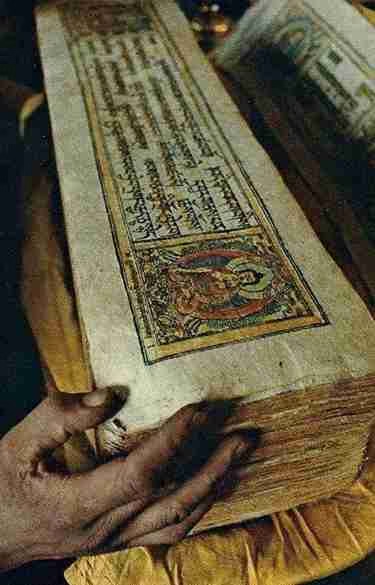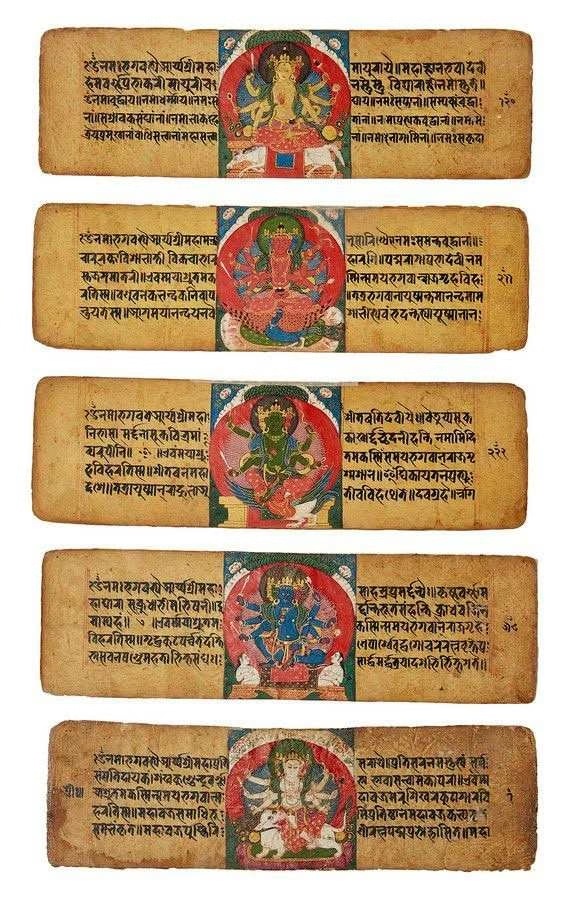Did you know that the illustrations featured in Indian manuscripts, especially in Ayurveda did not just serve as a decoration, rather they were used as instructional tools? Ancient Indian manuscripts like the Sushruta Samhita or the Charaka Samhita had anatomical diagrams, treatment procedures carved with intricate details for the ease of referencing. It helped the then physicians and surgeons to grasp complex concepts through a visual medium.
I bet you were not even close to guessing that the ancients were masters of art and incorporated the same in medicine, too. If you are also someone like me, who is always curious and on their toes, you might want to take a look at this blog. This blog aims to unravel layers of art in Ayurveda, right from the origin! Keep reading further to gather more information on the topic.
Are you wondering what is Ayurveda, or what are ancient Indian manuscripts, who wrote them, the origin of medicine, etc.? don’t worry I have got you covered. So, without further ado, let’s get started.
A long time ago, around 3,000 years ago, Ayurveda or the ‘science of life’ came into being in India. It literally means the science of life because for ages it has been teaching people to stay happy and lead a happy life. For the very first time the world witnessed a unique way to treat the human body.
The knowledge of Ayurveda was initially shared by the Rishis or sages, who had acquired this knowledge through practice in nature and meditation. It was passed from generation to generation by the word of mouth, until one day someone thought of documenting and preserving it. The document in which it was written down, was the Atharvaveda, one of the four vedas. Hence, the name ‘ayur’ and ‘veda’, in which ‘ayu’ means ‘life’ and ‘veda’ means ‘science’.
Ayurveda primarily focuses on the holistic well-being and healing of the human body. For this, it says, the balance of the Tridoshas is crucial. The Tridoshas involve Vata which is air and space and helps us move, Pitta meaning fire and water that helps with the digestion of food, and lastly Kapha which is earth and water that helps to keep us strong and sturdy. According to ancient ayurvedic texts these Tridoshas are responsible for the governing of all our bodily functions.
Some of the most important ancient Indian manuscripts in Ayurveda comprise of the Charaka Samhita meaning internal medicine written by Acharya Charaka, Sushruta Samhita that deals with surgeries composed by Acharya Sushruta, and Ashtanga Hridaya which is a concise medical guide by Acharya Vagbhata. And some treatment procedures include herbal medicines, modifications in diet, lifestyle, yoga, etc. From this we can see that Ayurveda focuses on the harmony of the body and mind with nature. It highly draws from the idea of the interconnectedness of the body and mind, and the connection of the human body with nature and the universe.
Ancient Indian manuscripts also played an important role in the preservation of the rich ancient knowledge that could have been lost in time, if it was not documented. Before the advent of the printing press in the 18th century, all the possible knowledge regarding culture, religion or tradition was passed orally either through folk songs or stories.
However, to ensure that such a technology, treatment procedures, and medicinal wealth is properly passed and the wisdom remains intact without any errors or variations in versions of it, scholars decided to record Ayurveda in manuscripts. These manuscripts were nothing like the paper, files or folders that we see these days, it was made up of palm leaves, or the bark of birch trees. All of these texts contained the principles, theories of diseases, treatments, surgeries, human anatomy, etc.
The Tradition of Illustrated Ancient Indian Manuscripts
As discussed above, the three most significant ancient Ayurvedic texts were the Charaka Samhita, the Sushruta Samhita, and the Ashtanga Hridaya. These texts are still considered paragons in medical science. These documents have helped shape the foundation of the Indian medical science. With the shift in the tradition of passing down the knowledge of medicine from oral to written, it enabled the scholars to include detailed diagrams and illustrations, which helped in enhancing the understanding of the concept.
Let’s discuss each one in detail. So as we know the Charaka Samhita was written by Acharya Charaka. This Samhita majorly focused on internal medicine, the classification of diseases, and pharmacology, hence all the art in this document portrays the parts and uses of herbal plants, medicinal formulations, and the processes occurring in the human body. Such illustrations have helped practitioners to accurately identify different kinds of medicinal plants and herbs and their applications for ages. We can also find the mention of the concept of Tridoshas along with illustrations that have been useful for the complete understanding of bodily functions.
We all have heard of Acharya Sushruta somewhere, right? He is also known as the father of surgery. He wrote the Sushruta Samhita which is also regarded as one of the earliest texts to have recorded the procedure of surgery and the knowledge of human anatomy. The depiction of the bones, muscles, veins, and organs of the human body with intricacies in this text has proven to be very useful in surgical procedures during and after those times.
The Sushruta Samhita, which is one of the most revered ancient Indian manuscripts, not only provided guidance to medical students but also ensured that the accuracy was maintained when carrying out nose surgery, etc. There are also various illustrations in the text that depict the different kinds of instruments that one could use for surgical procedures and also illustrate the steps to be taken post-surgery.
Next up we have the Ashtanga Hridaya, which is also considered a key text in ancient Indian manuscripts. It was compiled by Acharya Vagbhata. This text is more like an integration or compilation of the other two discussed above, the Sushruta Samhita and the Charaka Samhita. We can also say that it is a simplified version of the two. In the Ashtanga Hridaya, there are simple illustrations of treatment procedures and diagnostic techniques that make it even easier for the normal public to access it and gain knowledge of Ayurveda.

Such an evolution of all kinds of ancient Indian manuscripts in the country reflects the progressive nature of the ancients. The changing materials and techniques in the hope of preserving such valuable knowledge for the later generations also showcase their foresightedness and willingness to share their knowledge. Let us take a quick glance at the timeline and evolution of medical manuscripts through different eras.
As we know India is a tropical country, and the topology of the country actually is a very useful resource for it. As a tropical country, India, we can find palm trees on a large scale. The broad design of the palm leaves also proved to be helpful. Wondering how? Let me make it a little less complicated for you!
So in ancient India, the palm leaves were plucked and dried, so that they could be used as a thing to write on. The popular texts that we just discussed above were inscribed on such palm leaves using a stylus, sharp enough to make dents in the palm leaves, and later either ink or charcoal was rubbed over it to make it visible. To protect them from decaying, natural oils were applied to them. And over a hundred such leaves were bound and compiled together.
However, due to a host of other reasons they were required to be copied down over other leaves. Speaking about the time during which all of this was happening, was around the 4th century BCE.
Meanwhile in the early medieval period, in the colder regions of Kashmir and the Himalayas, where palm trees were like a far-fetched dream, the birch tree barks were used instead. These birch barks are also commonly known as Bhurja Patra. The birch tree bark was more durable in comparison to the palm leaves. However, the most important thing that comes to notice is that without using any fancy stationery, the ancient scholars still managed to inscribe some of the world’s most useful knowledge, too, with illustrations.
What was the Purpose of Illustrations in Ancient Indian Manuscripts?
Why were illustrations of the human anatomy, or different parts of the plants drawn in the ancient Ayurvedic texts, one might wonder. Illustrations hold a significant position in learning and education.
To give you an example from today’s world, even young children today learn through association, isn’t it? They have the words and the pictures depicting a particular word ready in front of them. This is done for a menial concept learning, however, in a similar manner to learn medical science or Ayurveda, it was important to have a visual medium to associate the theories and thus remember it in a better way.
The illustrations in ancient Indian manuscripts not only aided students in their education but was helpful for the practitioners of medicines, scholars, the then surgeons, etc. in understanding, memorizing the human anatomy, uses of different kinds of medicinal plants, treatment procedures, etc.
In ancient Indian manuscripts like the Sushruta Samhita, there are drawings of the human body along with details like the bones, veins, organs and organ systems, muscles, etc. There are also illustrations of various kinds of instruments used in surgeries, and a step-by-step guide on performing surgeries, especially removal of cataract and rhinoplasty or the nose surgery, for which Acharya Sushruta is well-known for.
We can also find detailed botanical illustrations in the Ayurvedic texts. As we are now aware that Ayurveda draws heavily from herbal plants, hence there are drawings portraying the plants along with their roots, leaves, and also flowers. Not only this, there are also sections describing the uses of these plants to treat different diseases. Charaka Samhita, as discussed earlier, is one of the most famous texts that has such illustrations of herbal plants, their medicinal properties and usage.
Some ancient Indian manuscripts also have illustrations depicting the several kinds of diseases, along with their symptoms, treatments, causes,etc. With such a visual aid combined with the written wisdom imparted through a written medium, it can easily be said that the ancient Ayurvedic texts were no less than the medical textbooks and handbooks we have these days.
Not only did these illustrations have practical applications, but they also held symbolic and aesthetic value. The texts include sacred images of deities, gods from Hindu mythology, and patterns which reinforce a spiritual approach in Ayurveda. The art quality was also wonderful, thus reflecting the genius of the ancients.

End Note
Wrapping up this blog, I hope that this blog was as useful to you as the ancient Ayurvedic texts were to the students in those times. I hope this blog has shed some light on your pursuit to gain more information on topics related to Ayurveda, art, and ancient Indian manuscripts.
Visual storytelling has always been a part of the country’s cultural heritage, may it be in temple architecture, or ancient manuscripts, Indians never fail to showcase their rich and vibrant art and culture. Each and every illustration carries a symbolic meaning which weave together to form the beautiful tapestry of not only wisdom but also aesthetics.
However, these days the fast and busy lifestyle has made people forget about the significance of Ayurveda. Nevertheless, some institutes are still researching more about it and are trying their best to preserve whatever has survived over the years.

For further reading, you can visit these useful resources:
Check out our Blog Page on Traditional Indian art.



Leave a Reply